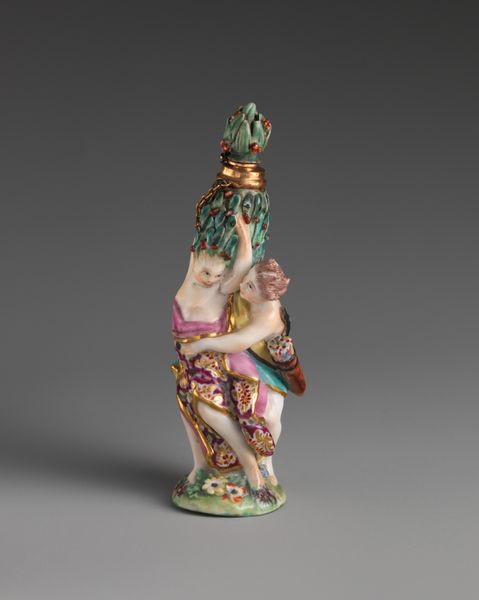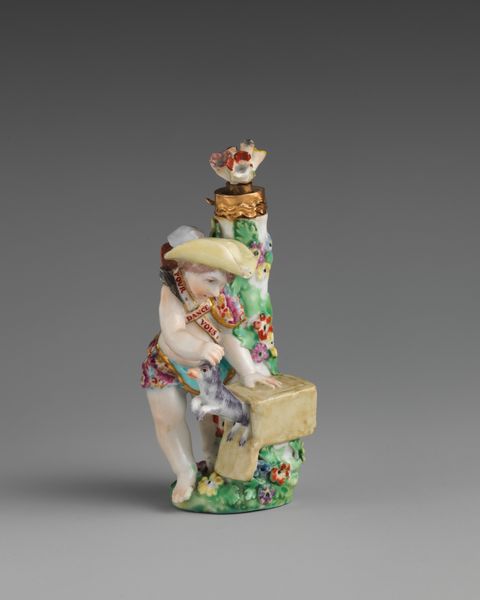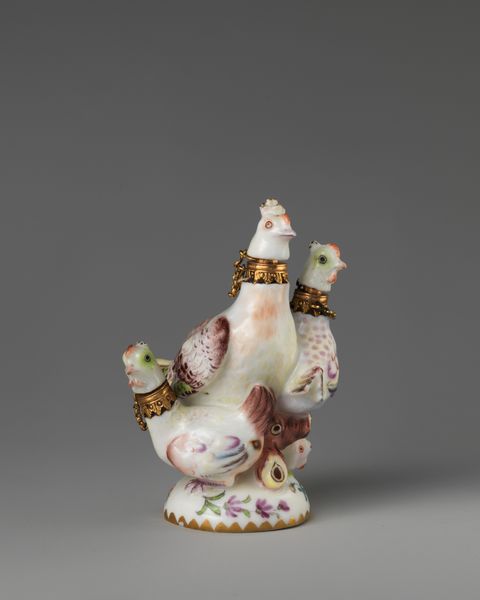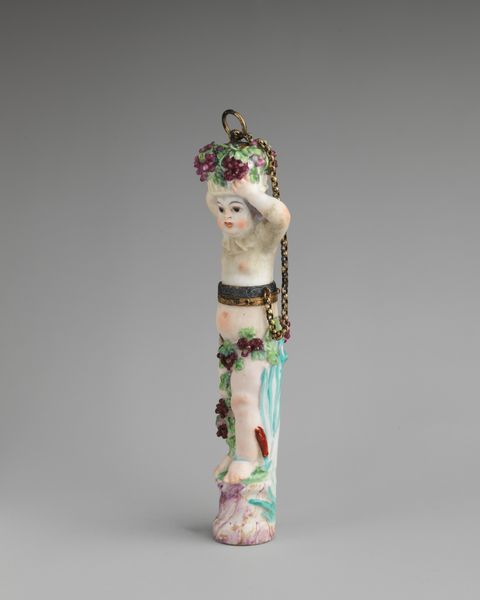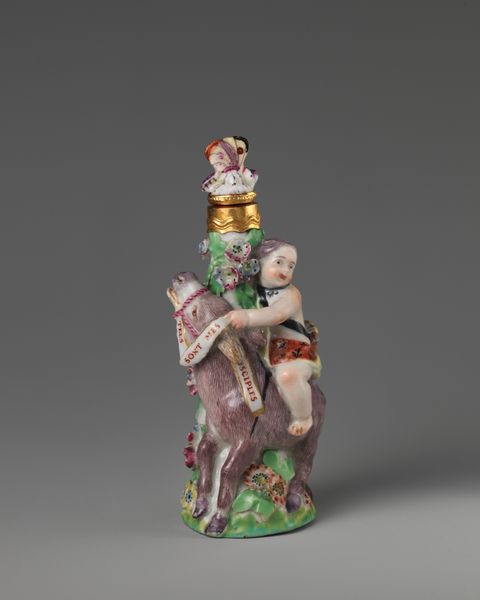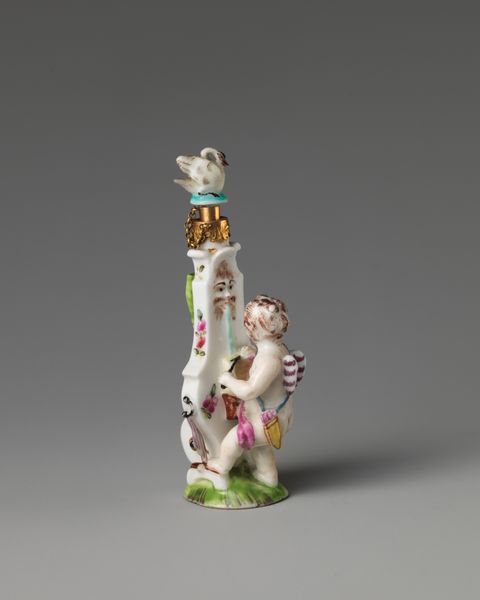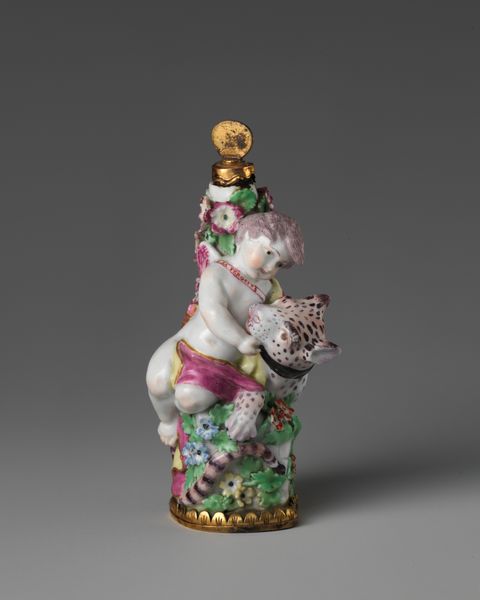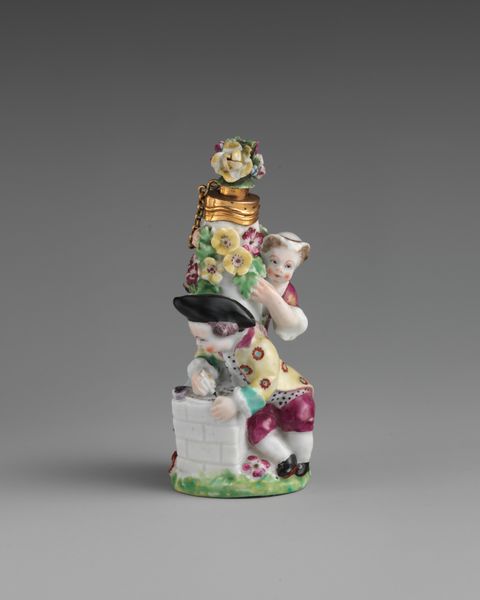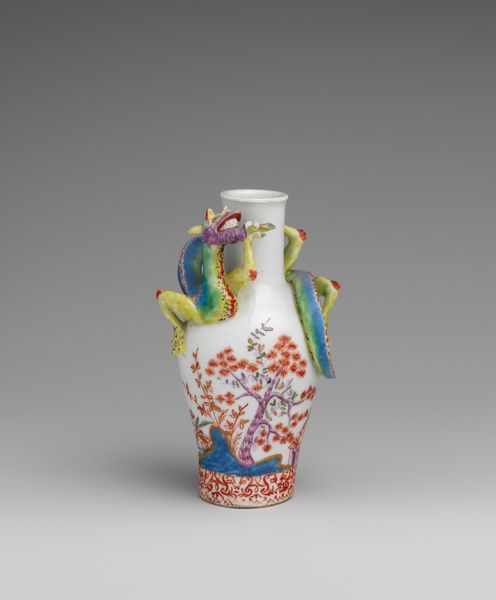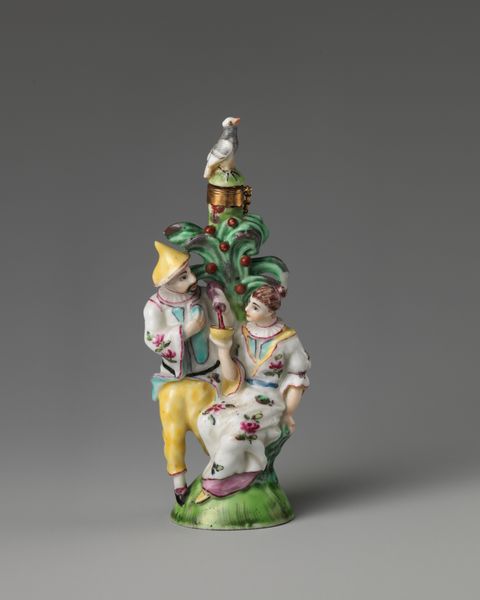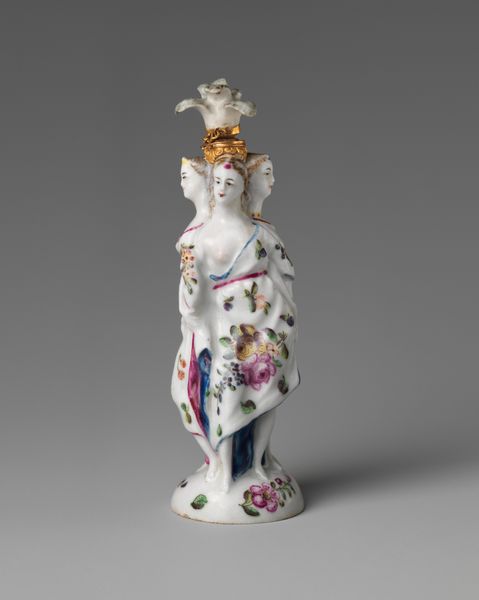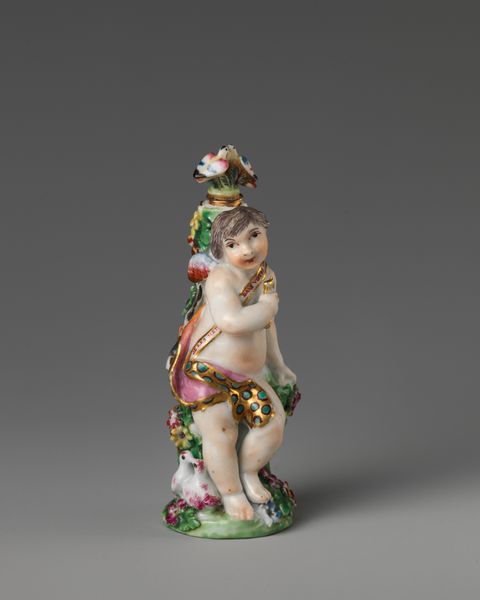
ceramic, porcelain, sculpture
#
ceramic
#
porcelain
#
figuration
#
child
#
sculpture
#
decorative-art
#
nude
#
miniature
#
rococo
Dimensions: 6 1/8 × 1 in. (15.6 × 2.5 cm)
Copyright: Public Domain
Editor: Here we have "Infant Bacchus," a porcelain sculpture from between 1745 and 1760, created by the Saint James's Factory. It’s such a delicate little thing, a miniature nude child holding a basket of grapes. What strikes you most about it? Curator: What jumps out at me is the loaded symbolism presented within such a delicate and seemingly innocuous form. Here, we have the figure of Bacchus, the Roman god of wine and revelry, but as an infant, which immediately brings forth ideas around the aristocratic use of child labour for harvesting, manufacturing and vending luxury items like porcelain in eighteenth century Britain. Editor: That’s a perspective I hadn’t considered. So, you're suggesting this decorative piece reflects the economic realities of the time? Curator: Precisely. This work exists within a network of social power. Luxury goods are rarely just objects of beauty, they often come at a human cost. Saint James's Factory catered to the elite, while child labor formed the foundation of much of England’s economic expansion and international influence during this era. We must remember this history when considering items made and sold during these eras. Editor: It is troubling to see the implications in what appears at first glance to be just a whimsical figurine. Does the nudity add to that reading? Curator: Absolutely. Consider the prevalent artistic conventions of the Rococo period, often veiling power structures and objectification behind seemingly harmless, almost 'cute' imagery. Nudity wasn't simply aesthetic; it often served to depoliticize exploitation through the deployment of classical mythology and seemingly “natural” imageries. Editor: That gives me a lot to think about, it is far from a harmless display piece! I didn't realize how much historical context could be packed into such a tiny sculpture. Curator: Indeed! By acknowledging these contexts, we develop a more nuanced understanding of both the artwork itself, and of the society that produced it.
Comments
No comments
Be the first to comment and join the conversation on the ultimate creative platform.
